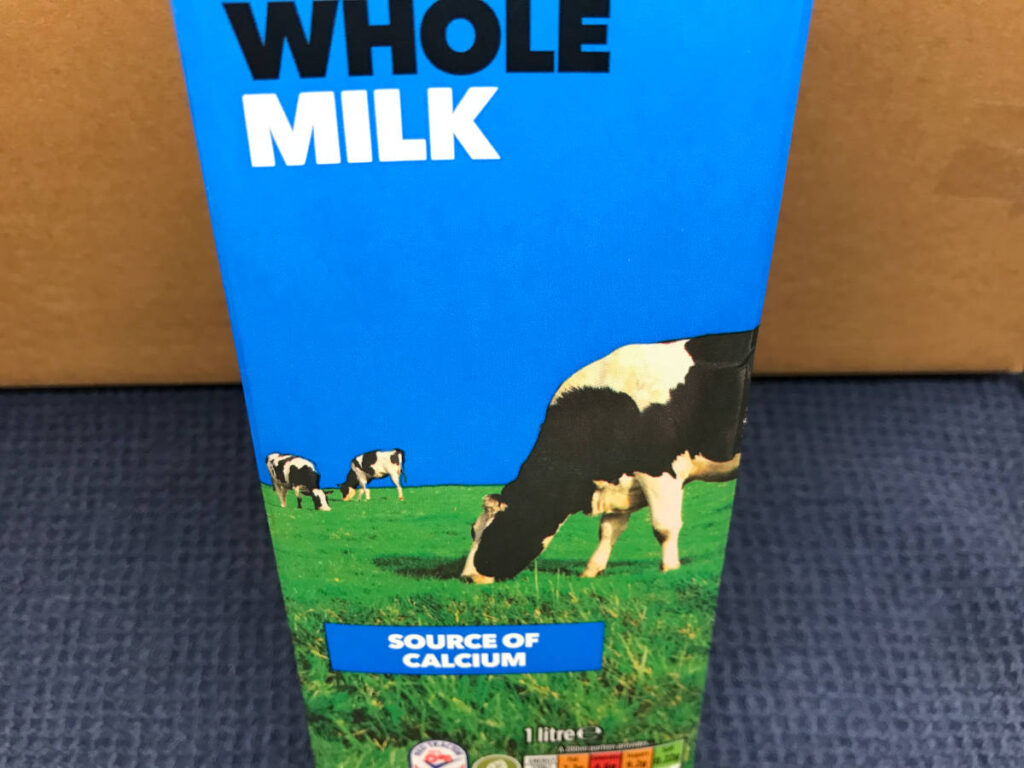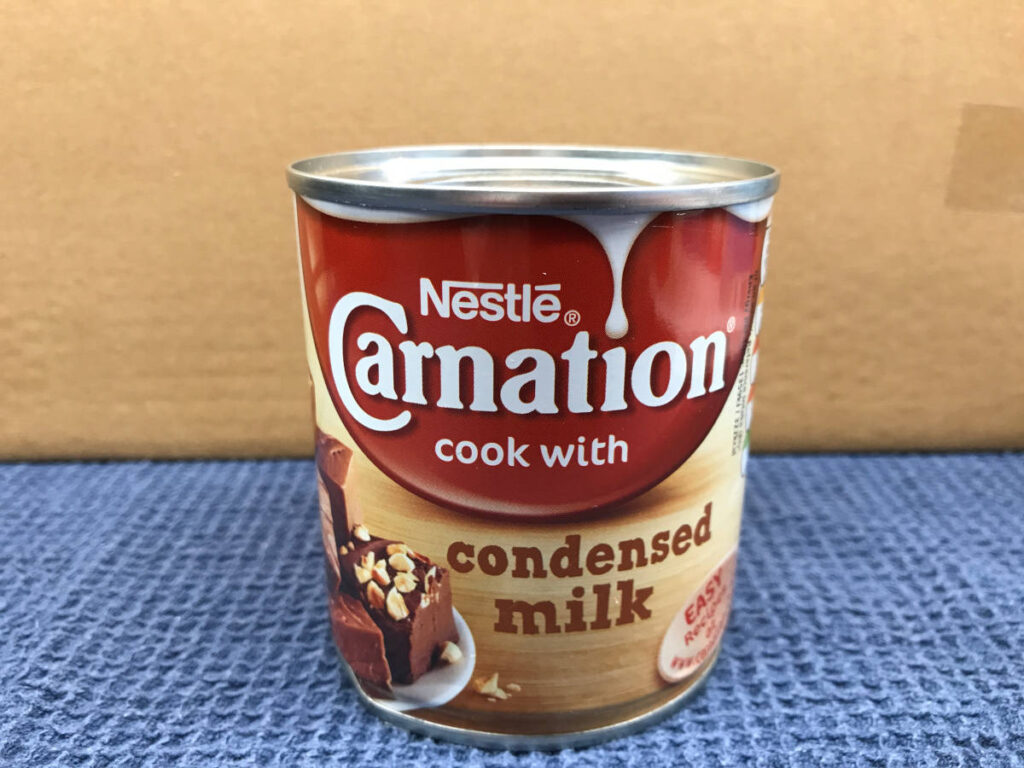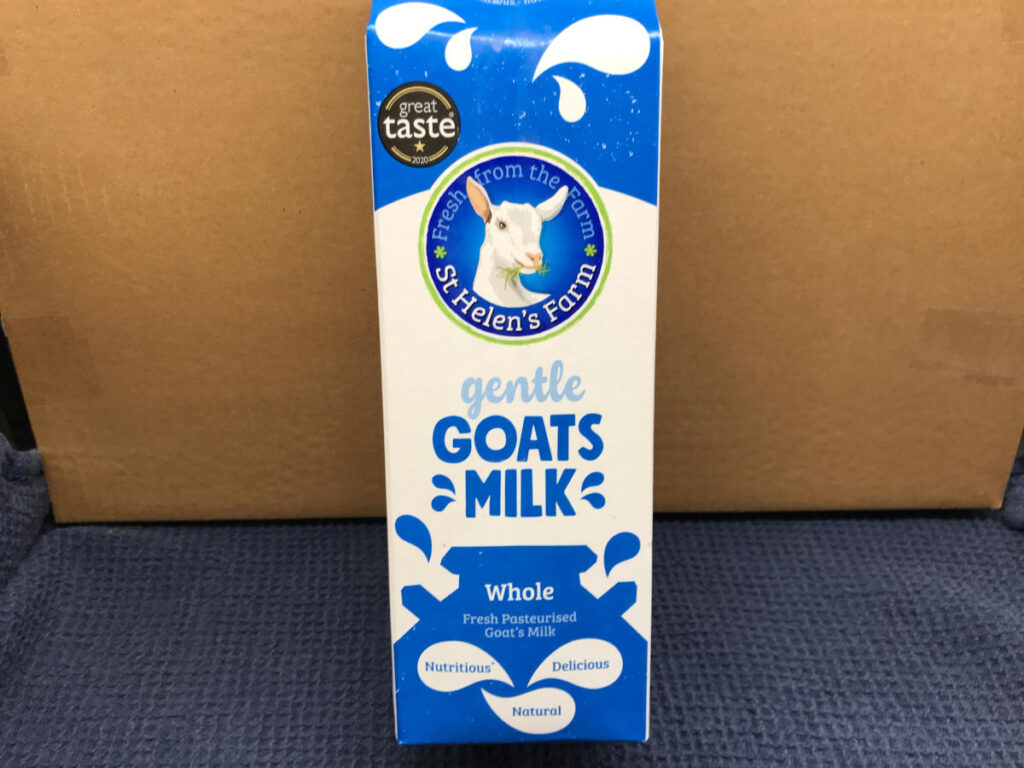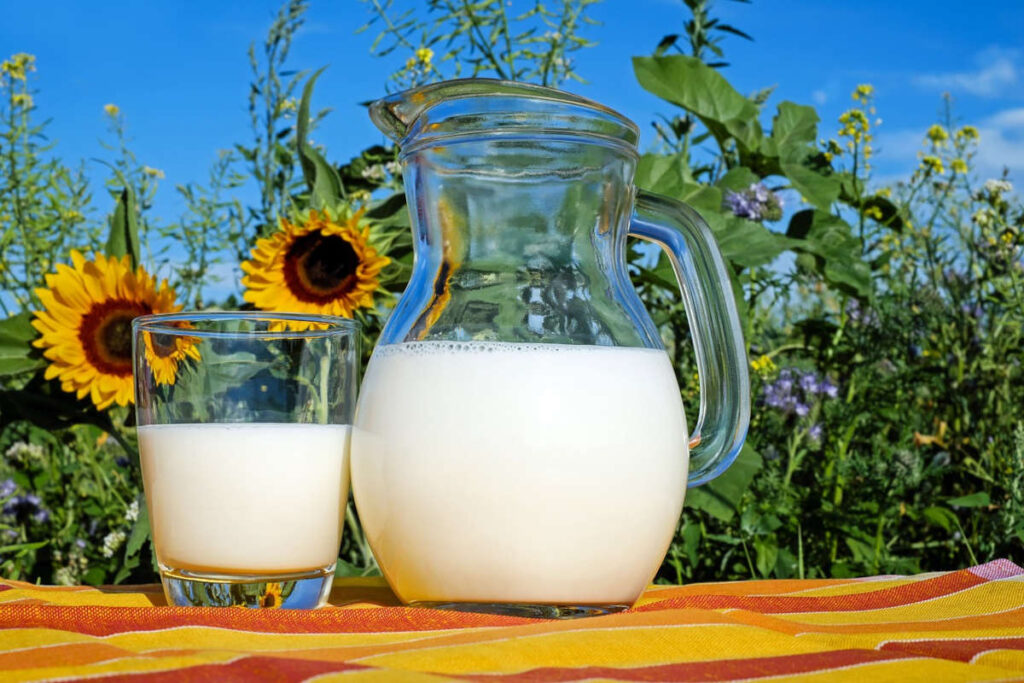The most popular types of dairy milk are cow’s milk, cream, half and half and goat’s milk. Each of these kinds of milk will give your milky or frothy coffee a slightly different taste and texture. So which milk should you choose? Read on to find the best dairy milks for coffee.

How to choose the best milk for your coffee
If you want a classic coffee with a creamy and smooth texture, then dairy milk is the way to go. But within dairy milk there are so many choices these days, ranging from really rich, like half and half or condensed milk, through to 1% skim milks.
Some of us don’t get on with dairy milk. Could be, you have an allergy or are vegan or simply don’t like the taste. But that’s no reason not to enjoy a great coffee because, nowadays, there are so many nut and plant-based milk to choose between. Check out part two of this guide for the best non-dairy milk for latte.
Here the best kinds of dairy milk:
Dairy Milk
Cows milk
It gives coffee a great creamy flavor and texture. Cows milk used in frothy coffee can be whole, 2%, 1% or skim. Plus it’s a great source of protein and fat.
The protein content helps to create a rich and creamy froth, while the fat gives your frothy coffee its iconic richness and flavor.
Health benefits of cows’ milk
Cow’s milk also contains Vitamins A, D, and B12, which are important for vision, immune function, and red blood cell production. In addition, cow’s milk is a good source of the mineral selenium, which is important for thyroid function.
All These nutrients are essential for strong bones and teeth, healthy muscles, and proper nerve function.
Whether you enjoy it in your morning coffee or simply drink it on its own, cow’s milk is a nutritious choice.
Whole Milk

It contains 3.25% milkfat and is often used in coffee drinks that rely on a smooth creamy flavor, such as lattes, cappuccinos and other coffee drinks.
But remember, unless you ask, most coffee shops use whole milk to make milky and frothy coffees.
Consumption of whole milk has slowly declined over recent decades, now accounting for around 30% of cows milk consumed (U.S. Department of Agriculture, Economic Research Service).
2% and 1% milk
2% milk is the most popular dairy milk in the United States, making up about 35% of all the cows milk Americans consume (U.S. Department of Agriculture, Economic Research Service).
It has a lower fat content than whole milk but more fat than skim milk. This makes it a good choice for people who want to enjoy the flavor and texture of milk without so many calories or fats.
1% milk is becoming more popular, Making up about 15% of all cow’s milk drunk in the United States (U.S. Department of Agriculture, Economic Research Service).
How to make 2% milk (and 1%)
Many people think making 2% and 1% milk is done by diluting the milk with water. While this does reduce the overall fat content, it also dilutes all the other vitamins, minerals and protein in the milk. And that just makes the milk taste more watery.
Milk producers actually create reduced fat milk (2% and 1%) by skimming the fat off the top of the milk while it is in mass storage tanks.
2% milk
Yes you can make a frothy coffee with 2% milk. it still has enough fat content to give your coffee a creamy flavor.
The only difference when using 2% milk is in the frothing. As it has less fat, 2% foams quicker than whole milk.
1% milk
With about a third as much milkfat as whole milk, 1% has a thinner consistency and a less intense flavor. It’s also lower in calories and cholesterol than whole milk, making it a healthier choice when you want a lighter option.
As with 2%, you can froth 1% milk. It is so much lighter in consistency than whole milk, so it foams quickly but the bubbles are bigger. It’s just not so creamy and smooth.
Skim milk
Skim milk is an ultra-low-fat milk, its got between 0-0.5% fat. Like 1% and 2% milks it’s made by skimming the cream off the top of the milk. Hence, skim milk!
The milk left behind has a higher percentage of water and less fat, but does still have its vitamins and minerals. It’s often used in coffee drinks, such as lattes, macchiatos and cappuccinos, because it doesn’t have a strong flavor and it blends well with other ingredients.
Half-and-half milk
half-and-half milk is made up of half cream and half milk.
Because its so rich and creamy, it’s often used in coffees such as cappuccinos and lattes. While half n half milk cannot be considered a healthy option when you are looking to indulge yourself, why not make your favorite delicious and creamy coffees.
It has a fat content of around 12% and a protein content of around 3.5%. Half n half cream is so heavy, you will have to work hard to create any foam. Fortunately, the rich and creamy texture of the cream and milk combine into a great rich and creamy coffee experience.
Condensed milk

It’is made with whole milk that’s been reduced in volume by evaporation. It is made from cow’s milk, or even buffalo milk and the evaporation process cuts the volume of milk by about 50%.
This gives it a thicker creamier consistency with much higher sugar and fat content. Making it great for luxurious coffees and desserts.
It won’t be your first choice if you want a really foamy coffee. The high fat content makes frothing or steaming almost impossible. But just poured over a shot or two of espresso, it does make a rich creamy coffee you will enjoy.
Cereal milk

Is cereal milk the new milk? Some people think so. Cereal milk has been around for a while, but it’ seems to be ‘s been growing in popularity recently.
What is cereal milk
Originally, it was simply the milk that remains after you’ve eaten a bowl of cereal. It’s thick and creamy, with a flavor that’s unique to each type of cereal and sweet with sugar.
In case you are wondering – no, you do not need to make a bowl of cereal to enjoy cereal milk. It’s become so popular manufacturers are now making it commercially available.
Is it worth the fuss?
Some people say it’s healthier than regular milk – although there is no real evidence to support that claim. Others say it’s simply because the flavor is so good.
Whatever the reason, more and more people are giving cereal milk a try.
It’s usually made by soaking whole milk in breakfast cereal. The milk absorbs the flavors, sugars and nutrients from the cereal, including protein. The resulting milk has a higher protein content and a lower fat content than regular milk.
Because it’s usually made with whole milk, with some added proteins, it will easily froth. Cereal milk gives you a fun twist on the classic frothy coffee experience.
How to make your own
If you have some cereal sitting around, just pour a bowl and then add a healthy amount of milk. Cover and put into the fridge for a couple of hours. Then strain to separate the milk. Congratulations! You now have cereal milk.
Goats milk

Goat milk is said to be healthier than cow’s milk, and you may find it is easier to digest. It has been gaining in popularity in recent years, and can now be found in many grocery stores.
Goat milk is high in calcium and protein, and low in fat. It also contains vitamins A, B, and C.
Does it make good coffee?
Well, it is easy to froth and makes a very respectable-looking frothy coffee. But what does it taste like? Here is the biggest surprise – for me, it’s like drinking a sweet mild flavoured cows milk.
The bottom line is, if you like dairy milk frothy coffee, you will love them made with goat milk.
Which milk should you choose?
So (drumroll!) Which is the best dairy milk for making a frothy coffee?
It’s all about personal choice. My choice is cow milk. It has so many variations that I can always make my perfect milky or frothy coffee.
Some people prefer milk with a higher fat content, while others prefer milk with a higher protein content. You really can have whatever you want when it comes to dairy milk:
- Its available everywhere.
- Less expensive than the alternatives.
- Arguably very healthy.
- The range of choices includes everything from heavy, thick, sweet and creamy, through to light textured and low in fat content.
Best of all, think of the fun you can have working your way through all of the options.
Hi, I’m Eric Loftuss, co-founder of Bean Thirst with my wife Sophie.
My Coffee journey started young. I used to help my mom with the weekly shopping trip and we always called in to a coffee wholesaler and retail outlet in our town.
I really started to learn about coffee when, while in college, I worked in a local coffee shop and trained as a barista. Even though I went on to qualify and work as a lawyer, I still get a kick out of brewing a cup of Joe.
Sophie and I are so glad to be part of your coffee journey. Find out more about us

